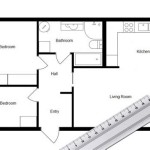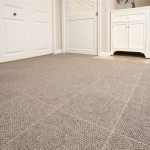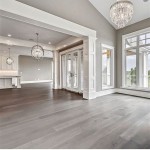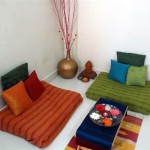Herringbone Bathroom Floor Tile Ideas
The herringbone pattern, characterized by rectangular tiles arranged in a staggered zigzag formation, has transcended its historical roots to become a popular choice for contemporary interior design. Its application to bathroom floor tiling provides a visually dynamic and sophisticated aesthetic, offering an alternative to more conventional tiling layouts. The versatility of the herringbone pattern allows for exploration of various tile materials, colors, and sizes, contributing to personalized and unique bathroom designs.
The appeal of herringbone tile floors lies in their ability to create a sense of movement and visual interest, adding depth and dimension to a space. This pattern can make a small bathroom appear larger and more spacious. The intricate arrangement of the tiles draws the eye, preventing the room from feeling static or confined. Furthermore, the herringbone pattern can be implemented in different orientations, allowing for further customization of the floor's visual impact. A longer, more elongated look can be achieved by running the herringbone pattern lengthwise down the bathroom, while a wider, more expansive feel can be created by running it widthwise.
The choice of tile material significantly impacts the overall look and feel of a herringbone bathroom floor. Common materials include ceramic, porcelain, natural stone (such as marble and travertine), and even wood-look alternatives. Each material offers distinct aesthetic and functional characteristics that must be considered in relation to the bathroom's design scheme and usage.
Material Considerations for Herringbone Bathroom Floors
Ceramic and porcelain tiles are popular choices due to their durability, water resistance, and affordability. Porcelain, in particular, is known for its high density and low porosity, making it an excellent option for bathrooms that experience high levels of moisture. These tiles are available in a wide range of colors, patterns, and sizes, providing significant design flexibility. Furthermore, they are relatively easy to clean and maintain, making them a practical choice for a frequently used space.
Natural stone tiles, such as marble or travertine, offer a luxurious and timeless aesthetic. The inherent veining and variations in color within natural stone create a unique and sophisticated look. However, natural stone requires more maintenance than ceramic or porcelain, as it is more porous and susceptible to staining. Sealing is essential to protect the stone from water damage and discoloration. Additionally, natural stone tiles can be more expensive to purchase and install.
Wood-look tiles, typically made of porcelain or ceramic, provide the aesthetic appeal of hardwood floors without the inherent vulnerabilities associated with wood in a bathroom environment. These tiles are designed to mimic the grain and texture of real wood, offering a warm and inviting ambiance. They are water-resistant, durable, and easy to maintain, making them a suitable alternative for homeowners who desire the look of wood flooring in their bathroom.
Color and Grout Selection in Herringbone Patterns
The choice of color for herringbone bathroom floor tiles is a crucial element in determining the overall aesthetic. Light-colored tiles, such as white, cream, or light gray, can create a bright and airy feel, making a small bathroom appear larger. These colors also tend to be more reflective, enhancing the natural light within the space. Darker colors, such as navy blue, charcoal gray, or black, can add drama and sophistication, creating a more intimate and luxurious atmosphere. However, darker colors can make a small bathroom feel more enclosed.
The use of contrasting grout colors can further enhance the visual impact of the herringbone pattern. A grout color that contrasts with the tile color will accentuate the pattern, making it more prominent and defined. For example, white tiles with dark gray grout will create a striking contrast, highlighting the zigzag formation. Conversely, using a grout color that closely matches the tile color will create a more seamless and subtle look. This approach can be particularly effective for natural stone tiles, where the focus is on the inherent beauty of the material rather than the pattern itself.
Neutral grout colors, such as beige or light gray, are versatile options that can complement a wide range of tile colors and styles. These colors provide a clean and understated look, allowing the tile itself to be the focal point of the design. It is important to select a grout that is specifically designed for wet environments, as these grouts are typically more resistant to mold and mildew growth.
Layout and Orientation of Herringbone Tiles
The layout and orientation of herringbone tiles can significantly impact the perceived dimensions of a bathroom. The traditional herringbone pattern involves laying the tiles at a 45-degree angle to the walls. This orientation creates a dynamic and visually engaging floor that can make a small bathroom appear larger. However, alternative orientations can also be considered to achieve different aesthetic effects.
Running the herringbone pattern lengthwise down a narrow bathroom can create the illusion of greater length. This approach is particularly effective in elongated bathrooms where the goal is to visually stretch the space. Conversely, running the pattern widthwise can make a narrow bathroom appear wider. This orientation is suitable for bathrooms that are short and wide, where the goal is to create a more balanced and proportionate feel.
Another consideration is the scale of the tiles in relation to the size of the bathroom. Smaller tiles will create a more intricate and detailed pattern, while larger tiles will result in a more streamlined and modern look. In small bathrooms, smaller tiles can be more effective in creating a sense of visual interest without overwhelming the space. In larger bathrooms, larger tiles can be used to create a more expansive and impactful design. The choice of tile size should be carefully considered in relation to the overall design scheme and the desired aesthetic effect.
In addition to traditional herringbone, there are variations on the pattern that can be explored. For example, a double herringbone pattern involves laying two tiles side-by-side in each row, creating a bolder and more pronounced zigzag effect. This pattern is suitable for larger bathrooms where the increased scale of the pattern will be more visually impactful. Another variation is the chevron pattern, which involves cutting the tiles at a 45-degree angle and fitting them together to create a continuous V-shaped pattern. The chevron pattern offers a more structured and geometric look compared to the traditional herringbone pattern.
The installation of herringbone tile requires precision and attention to detail. It is generally recommended to hire a professional tile installer to ensure that the pattern is laid correctly and evenly. Proper preparation of the subfloor is essential to ensure a level and stable surface for the tiles. The tiles should be carefully measured and cut to fit the space, and the grout lines should be consistent and uniform. With careful planning and execution, a herringbone tile floor can transform a bathroom into a stylish and sophisticated space.
10 Herringbone Tile Ideas Floor Decor Blog

White Herringbone Bathroom Floor Tiles Design Ideas

12 Bathrooms With Black Herringbone Tiles A House In The Hills

16 Stunning Herringbone Tile Bathroom Ideas For Every Style Coco Lapine Designcoco Design

White Herringbone Bathroom Floor Tiles Design Ideas

Herringbone Tile Ideas Shop Premium Tiles Country Floors Of America Llc

Powder Room Herringbone Tile Bathroom Vancouver By Westpro Flooring Houzz

50 Eye Catchy Bathroom Herringbone Tile Ideas Shelterness

White Herringbone Bathroom Floor Tiles Design Ideas

52 Herringbone Tile Bathroom Decor Ideas Digsdigs







